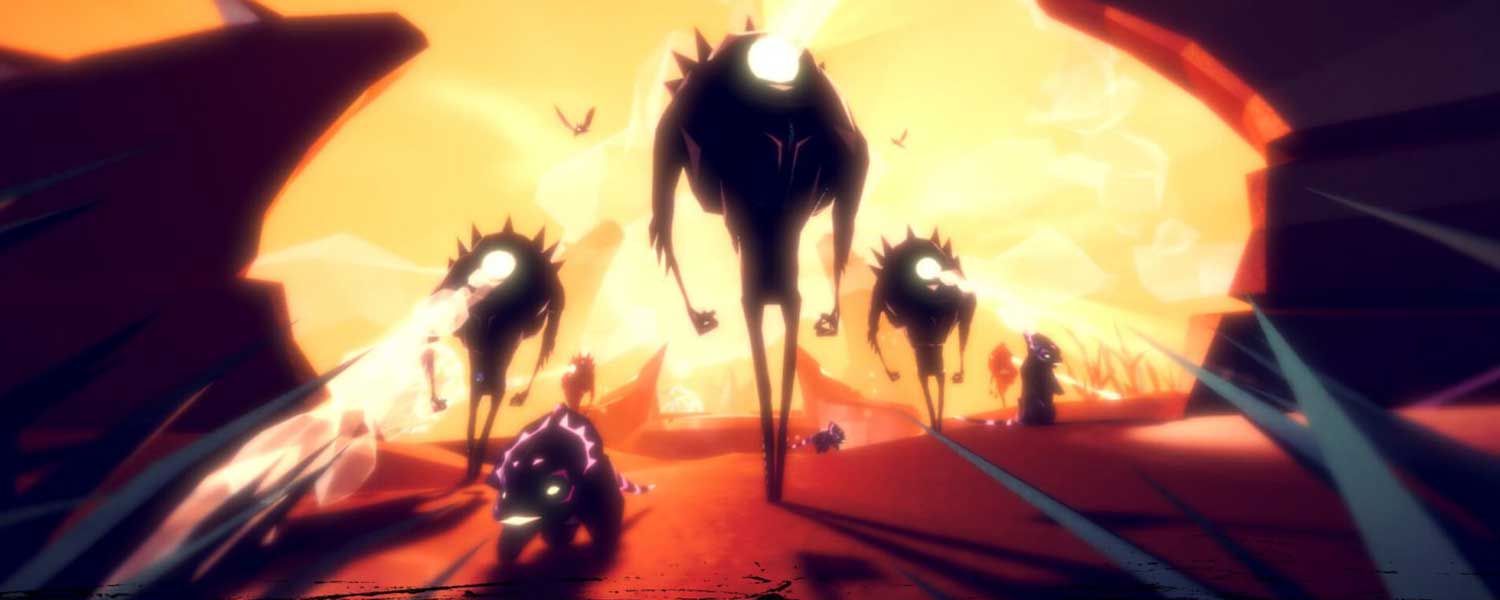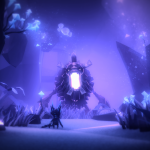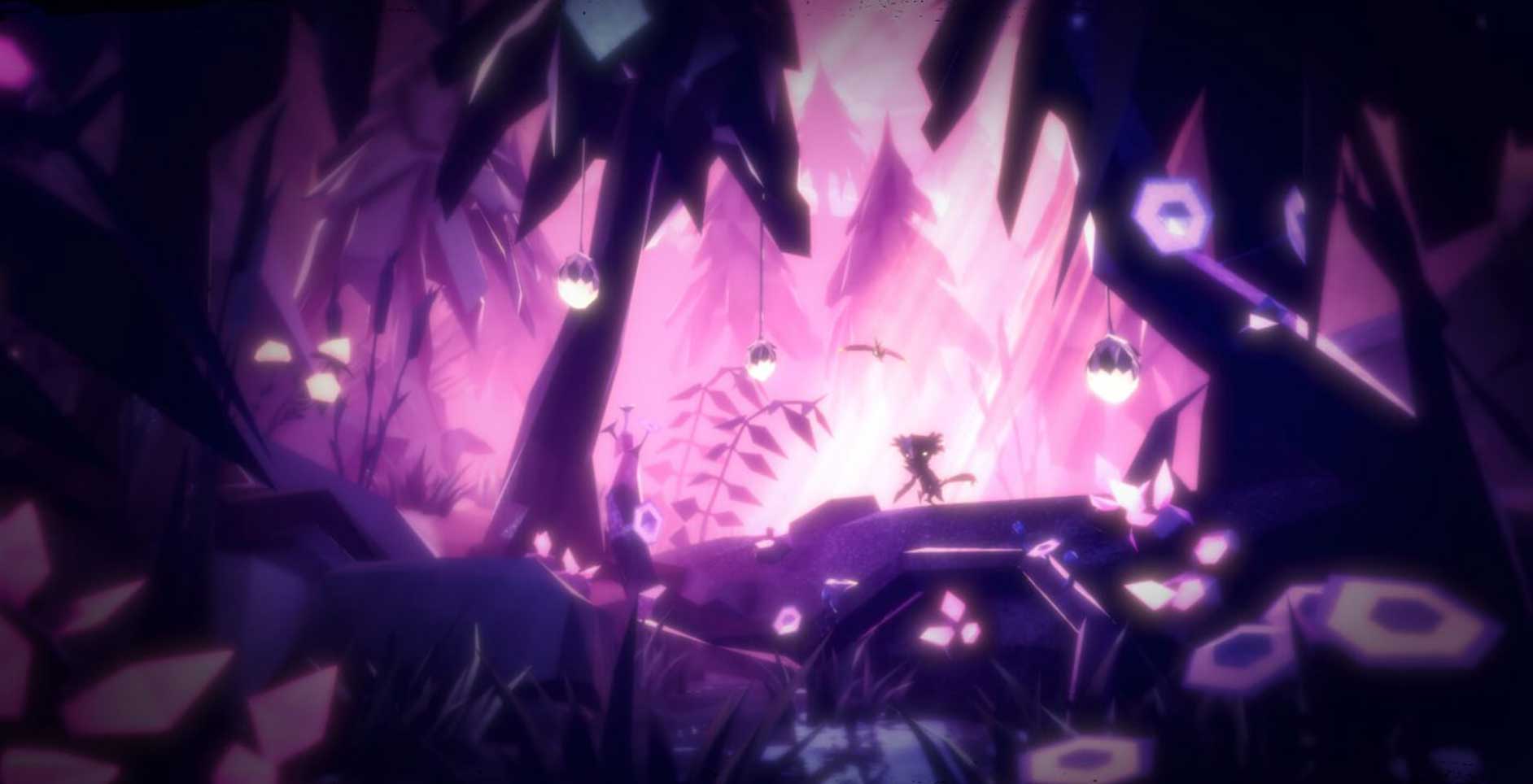Press Start may receive a commission when you buy from links on our site at no extra cost to you.
Stick it to the Man was a quirky laugh out loud platforming game where a man awakens from a coma with sixteen-foot spaghetti arm protruding from his scalp. It was also the first game I played from those at Zoink Studios, who have stowed the lunacy in favour of Fe, a commentary on the interconnectedness of nature and our relationship with it. Fe, while being an adventure game, borrows bits and pieces from many other genres while carving out a distinct and memorable personality of its own.
You awaken in a forest as Fe, a creature resembling the crystalline foxes from The Last Jedi and the game’s titular hero. Light on narrative, Fe drops you in without context or even so much as a guiding point of a finger as it hopes you’ll simply observe and explore to get where you’re meant to be. Soon enough, you begin to understand the vibrations of the forest and how it’s attuned to the nature and wildlife within it. By singing out, one of the few actions you’re capable of as Fe, you interact with the other forest dwellers. After an exchange of help, Fe inherits the songs of its new friends, unlocking further abilities to open up new ways to traverse the dense ecosystem.
 With its progression system and emphasis on exploration, Fe appears to be clearly inspired by the likes of Metroid. The game world isn’t the biggest out there, but the handful of interconnected hubs on offer take on new life as you unlock more tools of the trade. Even more impressive is that the world is seamless with no loading times with subtle seasonal changes acting as visual tells for when you’ve moved into a new zone. Though there’s no spoken language in Fe, with harmonious song acting as the lone communicator, the game’s lore is tucked away, hidden in discoverable stone monoliths. These indigenous markers tell the story of the game’s villains, The Silent Ones, the creepy entities that stalk Fe and the other forest folk throughout the game.
With its progression system and emphasis on exploration, Fe appears to be clearly inspired by the likes of Metroid. The game world isn’t the biggest out there, but the handful of interconnected hubs on offer take on new life as you unlock more tools of the trade. Even more impressive is that the world is seamless with no loading times with subtle seasonal changes acting as visual tells for when you’ve moved into a new zone. Though there’s no spoken language in Fe, with harmonious song acting as the lone communicator, the game’s lore is tucked away, hidden in discoverable stone monoliths. These indigenous markers tell the story of the game’s villains, The Silent Ones, the creepy entities that stalk Fe and the other forest folk throughout the game.
I’ll be the first to admit that subtext quite often goes over my head the first time around and Fe is no exception. Though I’m sure there’s a bigger picture message that’s as clear as the nose on my face, I was distracted by the imagery and spectacle that Fe puts at the fore, making it tough to devote enough thought to what wasn’t obvious. An adventure-platformer at heart, Fe is reliant on a lot of jumping, gliding and climbing. This all works perfectly well, making the core game pretty sound. The singing, on the other hand, can be a tad troublesome. By holding down the trigger, Fe sings out loud to summon a bird which acts as a temporary waypoint. It’s a good quick get out of jail for when you’re in a jam, but it means that to share songs with creatures you have to feather the trigger and find the sweet spot in a ludicrous pressure-sensitive half-press that so often stalled me long enough to take me out of the experience. It’s a strange design choice that serves no purpose other than to infuriate. During these interactions the camera tends to pan out to a wider shot which can cause a few headaches as the environment clips into view, obscuring the scene entirely. This is troublesome because due to the aforementioned inaccuracies of the triggers, I often needed to see so I knew when I’d got it right.
An adventure-platformer at heart, Fe is reliant on a lot of jumping, gliding and climbing. This all works perfectly well, making the core game pretty sound. The singing, on the other hand, can be a tad troublesome. By holding down the trigger, Fe sings out loud to summon a bird which acts as a temporary waypoint. It’s a good quick get out of jail for when you’re in a jam, but it means that to share songs with creatures you have to feather the trigger and find the sweet spot in a ludicrous pressure-sensitive half-press that so often stalled me long enough to take me out of the experience. It’s a strange design choice that serves no purpose other than to infuriate. During these interactions the camera tends to pan out to a wider shot which can cause a few headaches as the environment clips into view, obscuring the scene entirely. This is troublesome because due to the aforementioned inaccuracies of the triggers, I often needed to see so I knew when I’d got it right.
For the most part, Fe borrows the No Man’s Sky colour palette with a soft spattering of calming pink, blue and green neons shouldering the burden of brightening things up. There’s a warmth to the forest that is evident from the start, with the wildlife only serving to complement the welcoming arms of the wilds. It’s a place where colour and melody reign and The Silent Ones exist in contrast to those ideals. They’re cold and mechanical, thieving the forest of what makes it idyllic. There’s a lot of symbolism and striking imagery in Fe, with a few select scenes rivalling the scope of Shadow of the Colossus. For a large duration of Fe’s modest runtime, it’s as moving as it is picturesque. In a world where the only form of conversation is, at most, a hearty howl, Fe’s score does a lot of the heavy lifting from an audio standpoint. It’s heart-rending for the most part with occasional, hopeful swells from string instruments complimenting Fe’s song.



